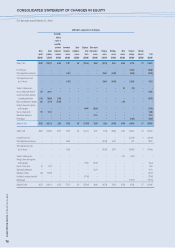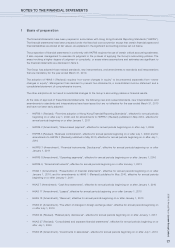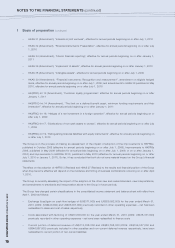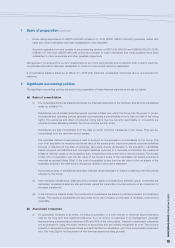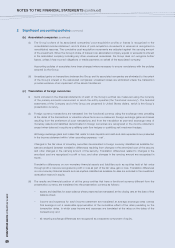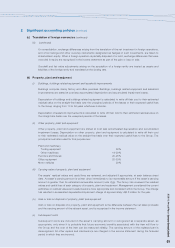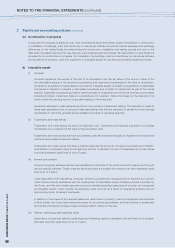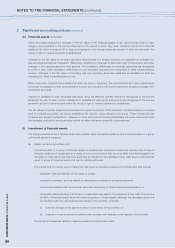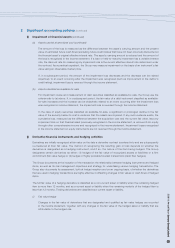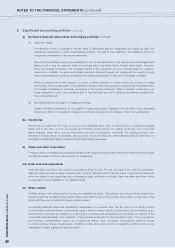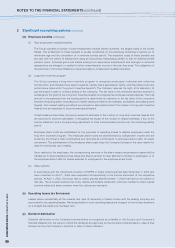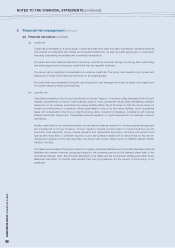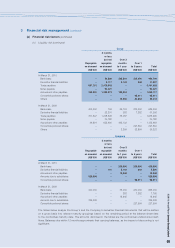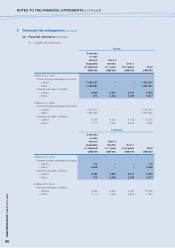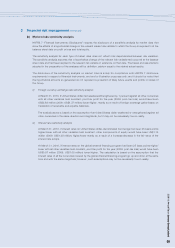Lenovo 2010 Annual Report Download - page 88
Download and view the complete annual report
Please find page 88 of the 2010 Lenovo annual report below. You can navigate through the pages in the report by either clicking on the pages listed below, or by using the keyword search tool below to find specific information within the annual report.
2009/10 Annual Report Lenovo Group Limited
86
NOTES TO THE FINANCIAL STATEMENTS (continued)
2009/10 Annual Report Lenovo Group Limited
86
2 Significant accounting policies (continued)
(j) Derivative financial instruments and hedging activities (continued)
(ii) Cash flow hedge
The effective portion of changes in the fair value of derivatives that are designated and qualify as cash flow
hedges are recognized in other comprehensive income. The gain or loss relating to the ineffective portion is
recognized immediately in the income statement.
Amounts accumulated in equity are reclassified to the income statement in the periods when the hedged item
affects profit or loss (for example, when the forecast sale or purchase that is hedged takes place). However,
when the forecast transaction that is hedged results in the recognition of a non-financial asset (for example,
inventory) or a liability, the gains and losses previously deferred in equity are transferred from equity through
other comprehensive income and included in the initial measurement of the cost of the asset or liability.
When a hedging instrument expires or is sold, or when a hedge no longer meets the criteria for hedge
accounting, any cumulative gain or loss existing in equity at that time remains in equity and is recognized when
the forecast transaction is ultimately recognized in the income statement. When a forecast transaction is no
longer expected to occur, the cumulative gain or loss that was reported in equity is immediately transferred to
the income statement.
(iii) Derivatives that do not qualify for hedge accounting
Certain derivative instruments do not qualify for hedge accounting. Changes in the fair value of any derivative
instruments that do not qualify for hedge accounting are recognized immediately in the income statement.
(k) Inventories
Inventories are stated at the lower of cost and net realizable value. Cost is determined on a weighted average
basis, and in the case of work-in-progress and finished goods (except for trading products), cost comprises
direct materials, direct labour and an attributable proportion of production overheads. For trading products, cost
represents invoiced value on purchases, less purchase returns and discounts. Net realizable value is determined on
the basis of anticipated sales proceeds less estimated selling expenses.
(l) Trade and other receivables
Trade and other receivables are recognized initially at fair value and subsequently measured at amortized cost using
the effective interest method, less provision for impairment.
(m) Cash and cash equivalents
Cash and cash equivalents are carried in the balance sheet at cost. For the purposes of the cash flow statement,
cash and cash equivalents mainly comprise cash on hand, deposits held at call with banks, highly liquid investments
which are subject to an insignificant risk of changes in value, and bank overdrafts. Bank overdrafts are shown within
borrowings in current liabilities on the balance sheet.
(n) Share capital
Ordinary shares, both voting and non-voting, are classified as equity. The unlisted non-voting ordinary shares have
the same rights as the listed voting ordinary shares save that the non-voting ordinary shares shall not carry any voting
rights until they are converted into listed ordinary shares.
Convertible preferred shares are mandatorily redeemable on a specific date. The fair value of the liability portion
of convertible preferred shares is determined using a market interest rate for an equivalent non-convertible bond.
This amount is recorded as a liability on an amortized cost basis until extinguished on conversion or maturity of the
convertible preferred shares. The remainder of the proceeds is allocated to the conversion option. This is recognized
and included in shareholders’ equity, net of income tax effects. Upon conversion of convertible preferred shares
to voting ordinary shares, the amounts of liability portion and equity portion of respective preferred shares are
reclassified to share capital and share premium.


